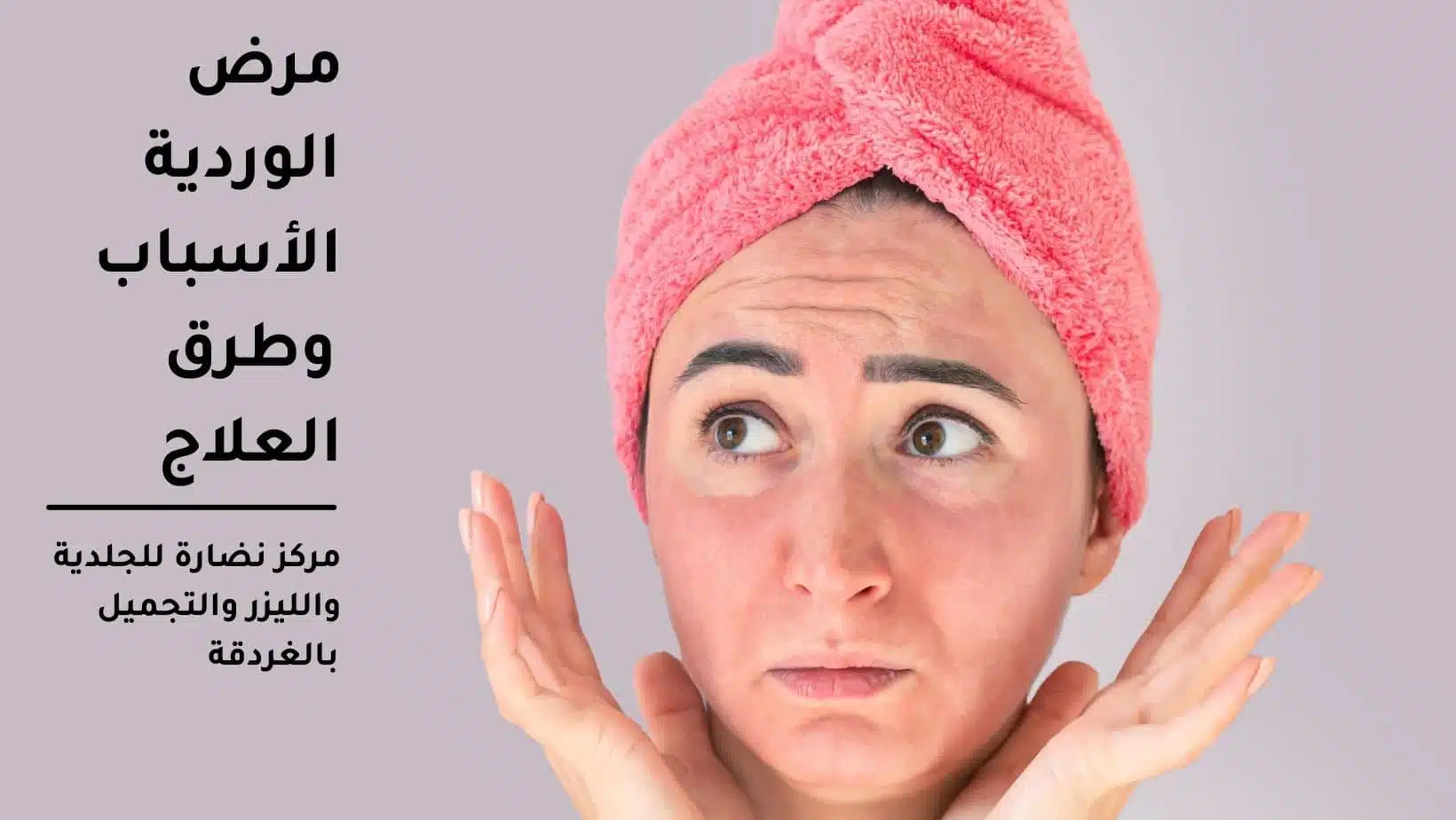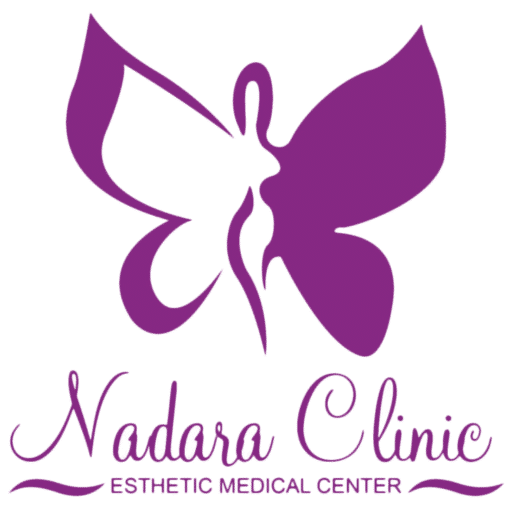If your face looks like you're blushing and you have acne-like bumps, you may have rosacea.
The dermatologist at Freshness Skin, Cosmetic and Laser Center in Hurghada can suggest medications and other treatments to control your symptoms.
In this article, we will learn about the causes of this disease, its symptoms, and the different methods of treatment.
What is rosacea?
Defined as a skin condition that mainly affects the face, it is characterized by chronic redness and is more common in women.
Men can also get it, but the symptoms are much worse.
Rosacea causes
There is no clear cause for this disease, but there are some factors that contribute to its appearance, including the following:
- Genetic factors
Genetic factors play a major role in the onset of the disease as having a family history can increase the risk of infection.
- vascular disorder
Redness in the skin may be caused by problems with the blood vessels in the face, and direct exposure to sunlight causes its appearance.
- moths
They are known as small insects that live on the skin naturally (Demodex folliculorum), and are harmless.
Some people are sometimes very allergic to mites, or are more sensitive than usual to these insects, many of which cause skin irritation.
- bacteria
A type called H. pylori that lives normally in the intestines causes rosacea.
Some studies suggest that MRSA can raise the amount of a digestive hormone called gastrin, causing redness of the skin.
- some medicine
Some medications, such as blood pressure medications or steroids, can also cause the redness of rosacea.
You can also read : Cellulite | Causes and ways to get rid of it.
Infection risk factors
There are some factors that can make you more likely to develop rosacea. Your chances of developing rosacea may increase if:
- If you have light skin tone.
- People between 30 and 50 years old.
- People with severe acne.
- If you smoke.
Rosacea symptoms
Redness in the cheeks, nose, chin, and forehead is the most common symptom, and the color can appear on the neck, head, ears, or chest.
Infected blood vessels may show through the skin, and they can thicken and swell.
Up to half of people with rosacea also have eye problems such as swelling, redness, pain, swollen eyelids and blisters.
This condition, called ocular rosacea, appears alongside skin rosacea, and is more common in children.
There are some other symptoms that you may have, which are as follows:
- burning of the skin;
- Rough, dry patches appear on the skin.
- Nose swelling.
- widening of the pores;
- The presence of bumps on the eyelids.
- Tingling feeling in the affected areas.
Symptoms can come and go, last for a few weeks, fade, and then come back.
You need to get treatment, and if you don't pay attention to this disease, the redness can get worse and may become permanent.
You can also read : Freckle marks and their treatment.
Complications
This disease can cause complications affecting the skin if not treated properly, and thickening of the skin is the most common complication.
This may occur after years of living with the disease, and recurring lesions also cause scarring of the skin.
The condition may be associated with bleeding, or skin infection in rare cases, and this bleeding occurs due to the large number of scratches in the skin.
An infection occurs if the skin is cut, allowing bacteria to enter, and in severe cases this causes pus-filled spots to appear.
After a facial infection has healed, the infection can worsen and spread, which can lead to permanent scarring.
Don't wait for complications to occur until you speak to a dermatologist at Nadara Skin, Cosmetic and Laser Center in Hurghada.
If the look or feel of your skin bothers you, it's important to get medical attention.
Rosacea diagnosis
There is no confirmatory test for this condition, but it can be diagnosed if you have persistent or recurrent redness on your face, as well as dry, burning eyes.
If you haven't developed rosacea completely yet, it's possible that your symptoms are caused by another condition that requires treatment.
You also need to check other areas of the skin such as the hands, legs, back and neck.
And it happens to see if you have lesions other than those on the face or not?
If the dermatologist at Nudra Skin, Cosmetic and Laser Center in Hurghada has diagnosed you already, you could have some ups and downs with this condition.
Not only will your rosacea vary slightly over time, you can have attacks when the effects are more noticeable.
It occurs due to the presence of certain triggers such as exposure to the sun, spicy food, or drinking hot drinks.
You may need special procedures to rule out other medical conditions. Diagnostic tests include:
- Complete blood count (CBC), erythrocyte sedimentation rate (ESR)
Lupus can be a disease that causes redness of the face, and inflammatory conditions and . may be associated withautoimmune diseases Such as rheumatoid arthritis with rosacea.
The white blood cell count (WBC), which can be measured by CBC, rises with inflammatory disease, and the ESR level, which is measured by a blood test, also rises.
- allergy test
A skin prick test is a method that a dermatologist examines at the Skin Rejuvenation Center.
This is done in order to assess the reaction of the skin to various substances applied directly to the face, and to find out if the lesions are associated with an allergic reaction or not?
- skin biopsy
You may need one or more if the skin lesions have an unusual shape or texture, which raises concern about skin cancer.
You can also read : Goodbye chickenpox.
Advanced Diagnosis of Rosacea
A number of medical problems can have a similar appearance to rosacea, and dermatologists work to rule out these other possibilities.
Other conditions that may be considered when evaluating rosacea include:
- Acne
Rosacea often has acne-like bumps, so a person's age and history of acne can help distinguish.
- Allergy
Skin contact or inhalation of certain substances can cause an allergic skin reaction similar to rosacea.
And it can be hard to tell if you have rosacea or an allergy? But in general, skin conditions change
With pink count.
- Dermatitis
Sometimes there is no explanation for dermatitis, and it can occur in different patterns, so the distinct form of rosacea can help with a proper diagnosis.
This condition affects the face or hands, and is often associated with the presence of abrasive materials.
- psoriasis
Patchy areas of skin are thickened, and the appearance of the skin and texture of the lesions can help differentiate rosacea from psoriasis.
- Sunburn
It can worsen rosacea symptoms, but sunburns are more painful and cause peeling or tanning of the skin, while rosacea does not.
You can also read : Pediatric dermatology.
Methods of prevention
Dermatologists at Nadhara Skin, Cosmetic and Laser Center in Hurghada advise to follow some tips to prevent rosacea, including the following:
- Use a sunscreen with SPF 30 every day.
- Avoid exposure to direct sunlight.
- Cover the face in cold weather.
- Use of skin care products.
- Clean your eyelids at least once a day if you have an eyelid infection.
- Do not drink alcohol.
- Make sure to have drinks that are warm, not very hot.
- Avoid caffeinated drinks such as tea or coffee.
- Don't do a lot of aerobic exercise, such as running.
- Do not eat spicy food.
- Use moisturizers that are appropriate for your skin.
- Massage the face in a circular motion, starting from the middle of the face to the ear.
- Eat an anti-inflammatory diet.
- Smoking should be quit.
What is the treatment of rosacea?
Treatments suggested by dermatologists at the Freshness Center in Hurghada help control redness, bumps and other symptoms, including the following:
- He might suggest brimonidine (Mirvaso, a gel that tightens blood vessels in the skin).
- Azelaic acid is a gel and foam that removes bumps, swelling, and redness.
- Metronidazole (Flagyl) and doxycycline, which are antibiotics that kill bacteria on the skin, help reduce redness.
- Isotretinoin, such as Claravis, is an acne medication that removes skin bumps, but it cannot be used during pregnancy because it causes birth defects in the fetus.
- Ivermectin and oxymetazolin are topical substances used in the treatment.
It may take a few weeks or months of using one of these medications to improve your skin, so your doctor may recommend procedures such as:
- Laser
It uses intense light to get rid of blood vessels on the skin.
- skin peeling
Doctors use natural exfoliating materials that contribute to revitalizing the skin and getting rid of redness signs.
In conclusion, after we know about rosacea and the causes of its occurrence, do not worry about the treatment, in the Freshness Center for Dermatology, Cosmetic and Laser in Hurghada you always find the best solutions.







